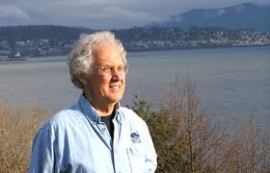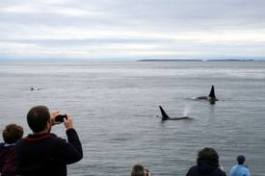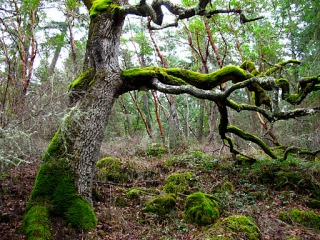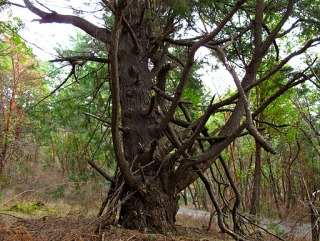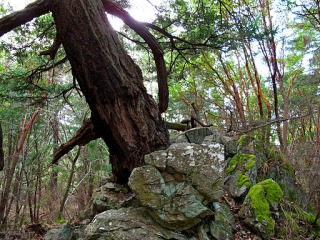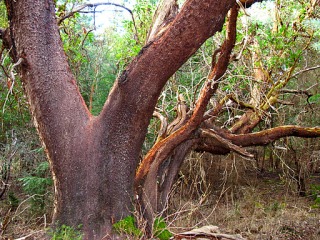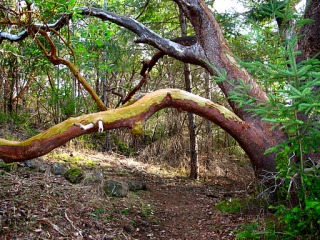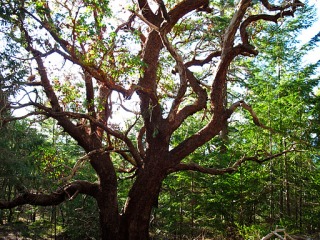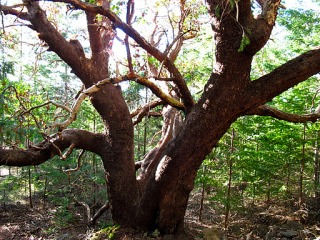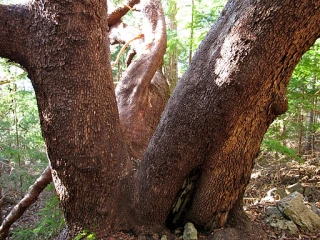The first time I ever went to Yellow Island in 1996, I was with a blind woman—a much loved and respected member of my community. While the rest of us feasted on riotous colors and sweeping views, she was carefully led to perfumed scents, the rough touch of lichen against rock, smooth and cool Madrona bark, and the raised letters of the memorial to homesteaders Lew and Tib Dodd.
I think that was when I first glimpsed the complex character of this small island. Only 11 acres, The Nature Conservancy’s preserve manages to feel like an entire world, existing almost out of time in the middle of the San Juan Islands.
I didn’t go back for years. When I did, I was in charge of my first group of Beach Watchers and busy with conversations and logistics during nearly all of the intense training period. That visit to Yellow almost ended with me spending all my time in the cabin, talking and planning. At the last minute, I dashed out, alone and well behind the guided group. I was astonished at the power of the island, and the incredible sense of being somewhere far away, though I was in familiar territory between San Juan and Orcas islands. The wind was blowing hard and the taste of wild was in the air. I didn’t forget that stolen moment in the 5 visits I have had since.
It was a great honor to go back to Yellow recently, in the company of my friend, the caretaker of this Nature Conservancy gem, Phil Green, along with composer and blogger Alex Shapiro and her partner Dan, and naturalist/author and blogger Monika Wieland and Keith. Note the common theme of blogger. Alex is an amazing composer and her blog about life in the San Juan Islands is a joy to read http://www.alexshapiro.org/blog/. Monika is an incredible photographer and naturalist who is building quite a compendium of local knowledge about life in and around the Salish Sea http://www.orcawatcher.com/.
From Yellow Island, I know what a San Juan prairie looks like. Perhaps “prairie” is not the best name… It might conjure up rolling fields of grass. But the rich and amazing prairie of Yellow Island is not that at all. It is a fragile remnant of what much of the islands used to look like, thanks to the Native American practice of burning. It is also a place that has been carefully managed to keep away invasive species, guiding and educating visitors so that careless behavior doesn’t destroy the delicate seasonal pageant of an intricate ecosystem . What a remarkable difference.
On this, my 7th trip to Yellow, I thought back to what our blind explorer experienced. It was also the first time I had taken in quite a few to be still. Instead of shepherding anyone around and talking, I laid on my back in the middle of the path and listened to the heartbeat of the island. It is a place of sound. In constant motion, harbor seals stirred, flapping flippers, grunting, and splashing.
The sweet song of white crowned sparrow floated over the air, interspersed with the whirring wing whistle of the rufous hummingbird. When I stopped again in the north side of the island, the low buzzing of the orange-rumped or black tailed bumble bee (Bombus melanopygus), filled the space around me. The western buttercups that gave the island its name were dominant, a yellow canvas dotted with the blue of camas and the bronzed tones of Chocolate lily. It was abundantly clear to me what a miracle was right before me: the collaboration of native flowers and native pollinators.
I was listening to the sound of life—one that has been threatened nearly to extinction in many other places. It brought forth a favorite quote by one of my heroes, John Muir:“Everybody needs beauty as well as bread, places to play in and pray in where nature may heal and cheer and give strength to the body and soul.”
Yellow Island is that kind of place. I give gratitude to all that conspired to allow me a day to once again delight in its beauty.
